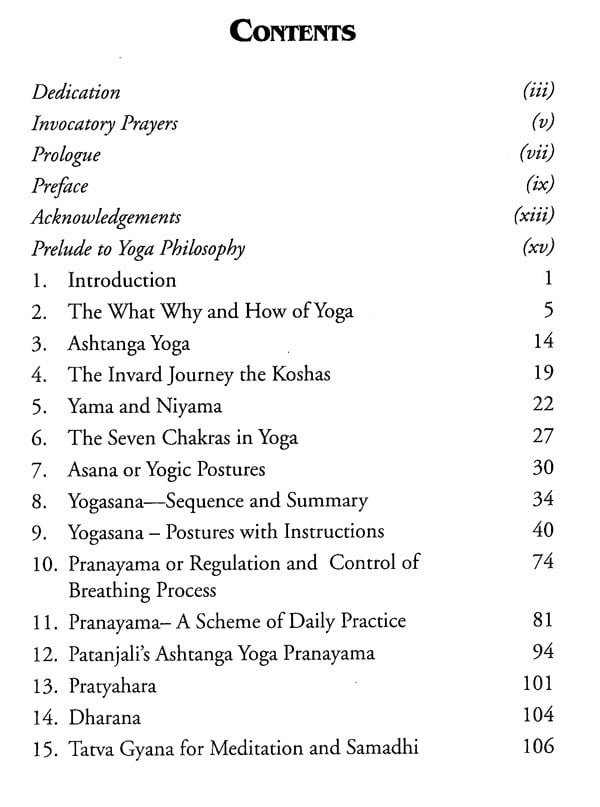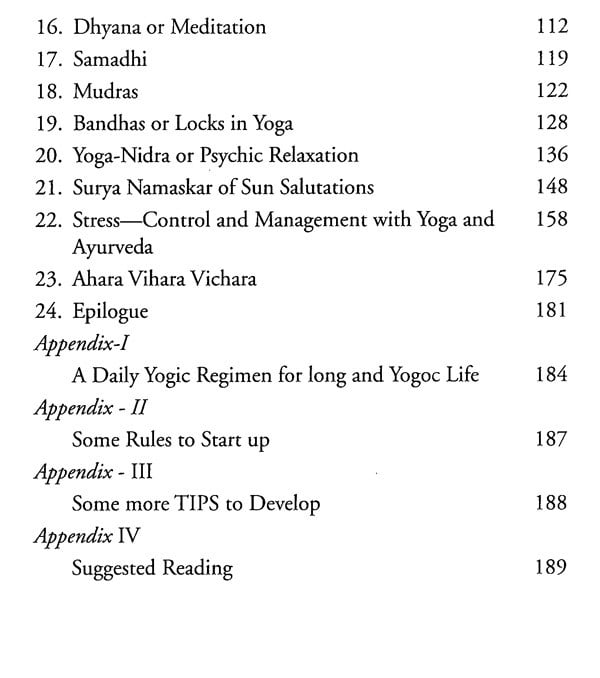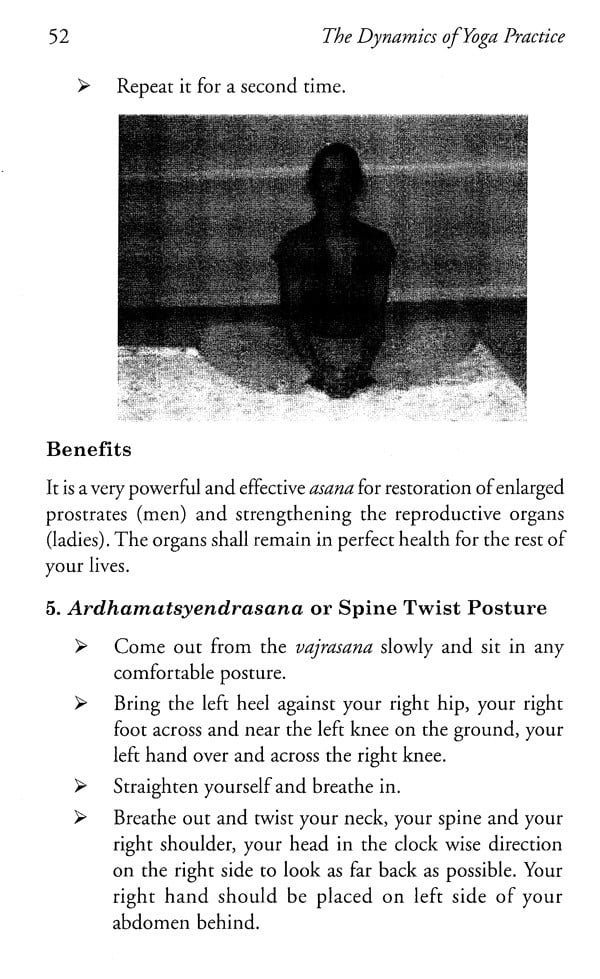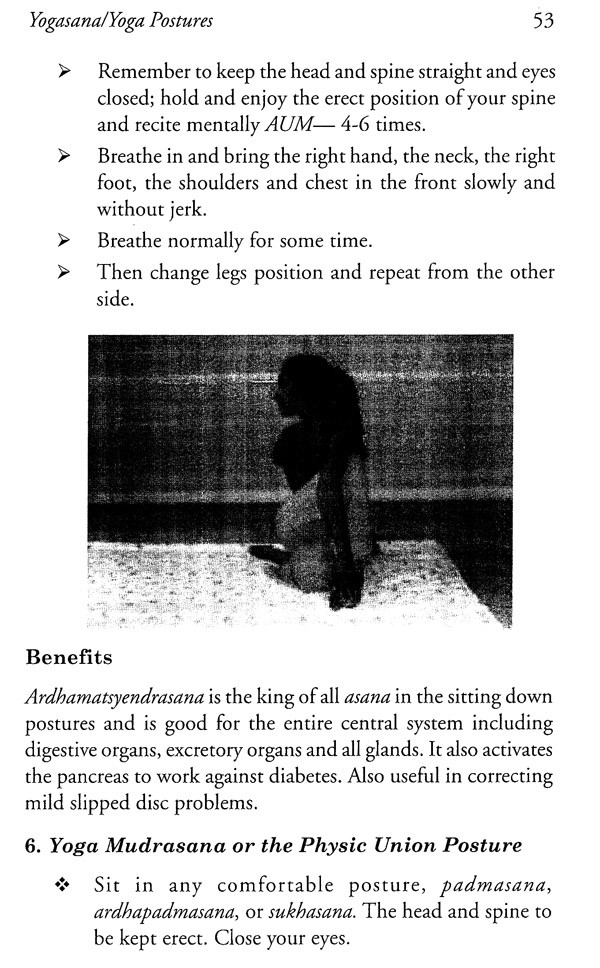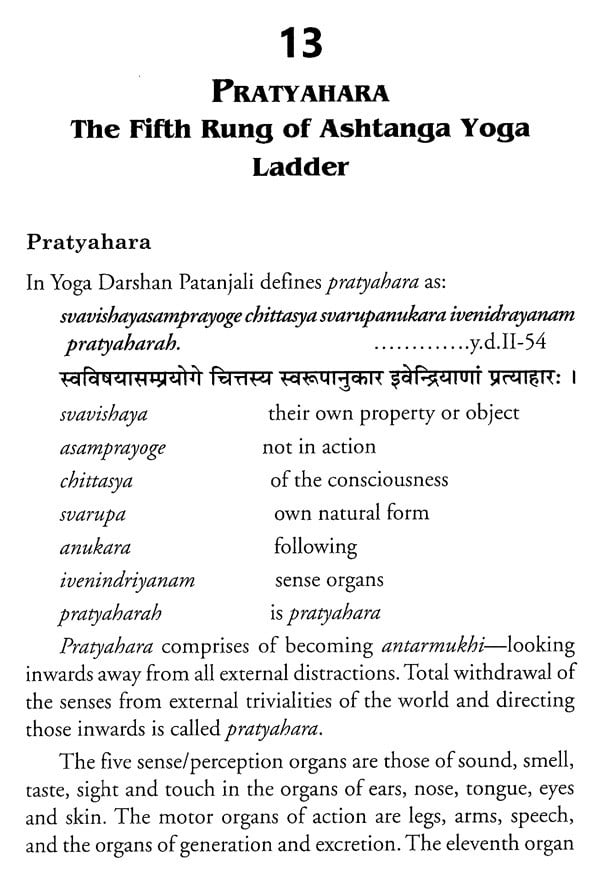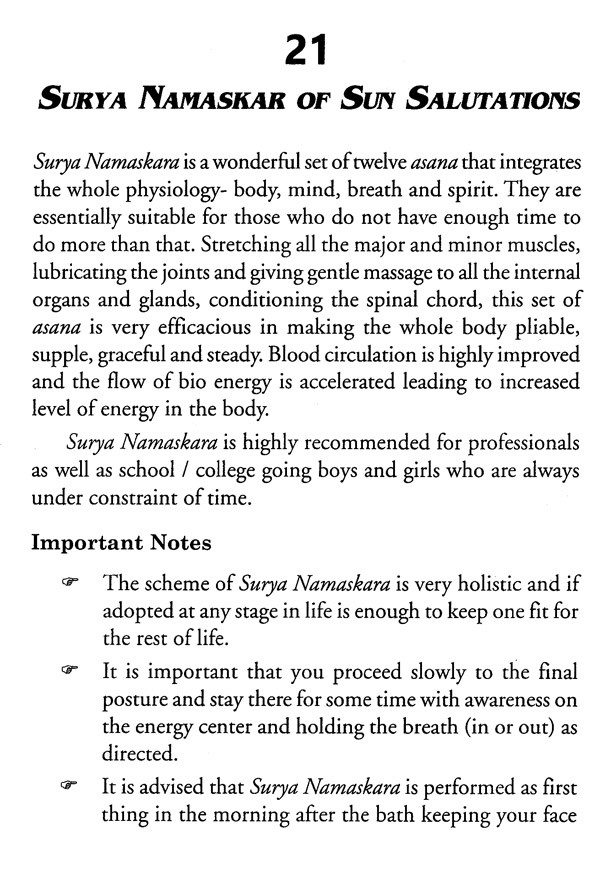
The Dynamics of Yoga Practice- Healing the Bealing The Body, Mind and The Soul
Book Specification
| Item Code: | AZD255 |
| Author: | Jai and Mrs Kamal |
| Publisher: | Astha Prakashan, Delhi |
| Language: | English |
| Edition: | 2021 |
| ISBN: | 9789386081254 |
| Pages: | 189 (Throughout B/W Illustrations) |
| Cover: | Hardcover |
| Other Details | 9 x 6 Inches |
| Weight | 430 gm |
Book Description
First of all, our thanks are due to all those great masters in the field of yoga who attracted and inspired us to become devotees of the most melodious art and philosophy of yoga from the very start of our consciousness.
Then our thanks are really due to our most revered and beloved living teacher, Brahmrishi Swami Omanandaji Saraswati of Indore India who came in our lives at an right moment to instruct and induct us in the order of Yogacharyas in December 1996 when on the invitation of our good friend Pt. Virendra Bahadur of Lucknow we got the opportunity to join him for a ten days Yoga camp with Swamiji in his Indore ashram. But for him we would never be such ardent and passionate lovers of yoga.
Our most humble thanks and gratitude to our loving yoga student and friend, Mr. Satpaul Goyal of Ann Arbor, Michigan USA who offered to examine the manuscript with spelling and syntax, sharpen its features and embellish it in all possible ways.
Our loving thanks are due to our daughter, Meenal, her daughter, Ilisha, aged 9, and our granddaughter, Saloni aged 10, to offer to do most of the images for the book.
Lastly our loving thanks to son, Vivek, and Akshat, daughter's son, for taking the pictures.
Mr. J Agarwal a keen researcher and proficient writer on theology and Vedic Sciences. He has written three more books earlier, published by Pushtak Mahal New Delhi and available on Amazon. He is a retired Chief Engineer of UP Irrigation Department, retiree of 1996. Ever since he has devoted his time and energy to the study and practice of Vedas and Yoga sciences. He has been pursuing his Yoga teachings in India and abroad for long time. Verily, through Yoga his mission has been the propagation of Vedas and bringing people into the Vedic fold once again. This has led him to the formal study of Vedas and other Vedic literature to understand the basic foundation of various religious beliefs in India and elsewhere including development of spiritual philosophy from Vedic times down to Rishi Dayananda Saraswati of twentieth century. The present book is a result of his untiring efforts over the past two decades towards propagation of Vedas across the world.
I do not remember as to how and when I got attracted towards yoga in life. But my association with yoga goes back to the midforties, last century, while in school, I was rather a thin boy. One of my good teachers, who came to teach us Hindi in our Saharanpur home, advised me to spend some time out of my short mornings (due to early school) in the park opposite our home, do some jogging and other exercises, and take a glass of milk after that. He also advised me to do some body massage before bath occasionally. My tauji, elder brother of my father, a product of the Gurukul Kangri Jwalapur, Haridwar (now university), always kept an eye on me, and not only kept advising me to do lot many small things from time to time, but also gave me several short books to read and follow. Maybe, I picked up some clue to yoga out of that material.
Later in early fifties, while pursuing my graduate studies in the University of Lucknow, during morning walks of about forty-five minutes plus a short visit to the university gymnasium proved instrumental to bring home the essence of Yoga to me. It was here I got motivated to attempt and practice some yogic postures like, shirshasana (head stand asana), and continued them for long.
There was some gap in the sixties after marriage. But soon in the seventies, while working in Nainital district of Uttar Pradesh, I picked up some books on yoga from a Nainital Book Store, learned some inspiring and less-time-consuming asanas to incorporate in my daily regimen. In the early eighties I remember having taught a few good asanas to my daughter and son as they went to college and advised them to find time to practice even in their rather busy college schedule as an aid to keeping good health through their full professional program.
On retirement from work in the mid-nineties we (both) focused passionately on the study and practice of yoga after intensive training for certification (as yogacharyas).
Now it was time to take a pledge to dedicate ourselves to practice and teaching of yoga as a mission of life to as many people as possible with no obligation. And ever since we are conducting free yoga camps in India and abroad. Though we don't sell yoga, yet many participants by way of gratitude want to offer gurudakshna. We welcome such donations for the sake of education of the poor and needy in India—especially Sanskrit gurukuls on Panini Ashtyadhyayi, necessary for understanding original Vedic texts.
Today it gives us immense pleasure to talk and disseminate the knowledge of yoga, its science and art to as many people as we can. Yoga is a great gift of God to humans revealed to the ancient rishis. Yoga knows no religion. It is mandatory life style for all irrespective of caste, creed, or geography, a holistic, much more obligatory (not optional) life style for life long wellbeing.
We were inspired to write this small book because during our classes. In United States of America we found that a small practicing manual on yogasanasa and pranayama is essentially needed as a handy tool to guide yoga aspirants to persue their practice without a regular yoga teacher to keep them in good health while attending to their strenuous work schedules as also to stay motivated for higher goals of life—of peace, happiness and joy. In one of our visits to the US in 2003 in our classes in the office of our son twenty-eight Americans attended. We were impressed by their intent and passion.
Later, we started working on this book and today we are happy to see this book in your hands. Most of the chapters incorporated are based on the content and spirit of our teachings. The purpose of this book is to introduce to the reader the concepts of daily practice. Yoga considered esoteric by many even this day is highly interesting and absorbing science and art of living.
An important rule is never to force and over strain, beyond your capacity, learn to follow your body language telling all the way how far to go.
I would suggest that while using this book you share the knowledge with someone you care. That would not only help you in achieving your goals but ours too by integrating it into lives of others.
Thank you for giving me the privilege of sharing this work. I wish you a life full of hope and fulfillment of your dreams, goals, perfect peace and happiness. My blessings for putting your brick in building a new world order of hope, happiness, peace and joy for mankind.
Yoga has suddenly assumed worldwide recognition, and acceptance today not so much as a path of salvation, and enlightenment but as a great art of living. The history of Yoga goes back to age of seers who lived in India more than 5000 years ago. Today Yoga has become sine qua non among the stars, the sportsmen, and the executives, politicians and professionals— practically all fields throughout the world. Every week ends in the West (also elsewhere in the world) people rush from their high stress jobs to hear to the melodious and soothing voice of the yoga teacher. There are many who need yoga therapy to de-stress their bodies and minds from the stress generated from their weeklong multifarious activities. The yoga teacher's Namaste at the end of the session, meaning 'the divine in me bows to the divine in you', sounds so soothing and tranquilizing.
Dr. Carrie Demers of the Himalayan International Institute of Yoga Science and Philosophy, Honesdale, Pa USA, admits, `Our system of medicine is very fragmented. We send you to different specialists to look at different parts of you. Yoga is more holistic; it's interested in the integration of body, breath and mind.' And further says, 'In modern medicine, we are actually doing a lot more guesswork than we let on. We want to say we understand everything. We don't understand half of it. It's scary (frightening) how clueless we are.'
As we enter the new century we find that the medical science has a formidable range of painkillers, but hardly anything for sorrows and pains or stress plaguing the human society.
Desperate people consult dozen specialists to get dozen conflicting opinions. What actually the West is coming to realize and accept is that they have been treating the disease and not the whole human being where as in the East they take care of the patient more than the disease. Going to the root of the ailment, East works on the human body on inside-out basis rather than outside-in basis.
Ashtanga Yoga, propounded by Maharshi Patanjali, helps us to endure the suffering gladly without feeling the pain. The individual thus learns to endure what cannot be cured, and cure what need not be endured.
Patanjali and His Yoga Darshan
Before we go further let us talk about the father of yoga science, the great savior and sage Patanjali and his famous work on yoga—the yoga-sutras.
Nothing much is known about the life of the great master, who may have lived sometime around the Great Mahabharat war in India (more than 3000 BC) or even earlier because the great intellectual wizard, Vedic scholar and author of the famous Mahabharata epic, Maharishi Vedavyasa himself wrote the first commentary on yoga sutras.
Patanjali is referred to as one of the highly evolved souls who graced the Earth to help humanity. The yoga system, though always existed in the Vedic texts, Patanjali developed it in the form of sutras for the benefit of mankind. Yoga, therefore, has an ancient origin from the beginning of the history of ancient Aryans. We come across references to yoga in the hymns of the Vedas indicating the different paths pursued by various seekers. It is a system purely based on the Vedas and the Upanishads.
Patanjali, as a great scientist of human behavior, experienced the sorrows and joys of humans and learned to transcend them, and thus brought out his 'magnum opus' on yoga science known as 'yoga darshan' or the mirror of the human soul.
Yoga Darshan
The Divine Philosophy of Action (or yoga darshan) means vision of self or mirror of the human soul. The Yoga darshan has come down to us in the shape of 196 sutras or aphorisms to cover wide range of aspects of human life and behavior. It begins with a prescribed code of conduct and with the vision of man's true self. It certainly is a comprehensive exposition of study, analysis, and synthesis of various facets of human psyche—emotions and intelligence integrated with the gross physical body. The sutras are very apt, concise and scrupulously accurate and precise in meaning.
In Yoga sutras the great master elaborated the means of overcoming the afflictions (klesas) of the body and the perturbations (fleeting tendency) of human mind that are real obstructions in our way to peace and spiritual contentment.
The Yoga darshan stands till today as the fountainhead of our entire knowledge on the esoteric yet highly spiritual philosophy and art of yoga.
The yoga-system of Patanjali is an ethical system based on non- violence, truthfulness, austerity and extreme purity of body and mind. In short it requires observance of the highest standards of moral and ethical values before one can aspire to step deep in the realm of true spiritual sadhana I yoga practice.
**Contents and Sample Pages**
